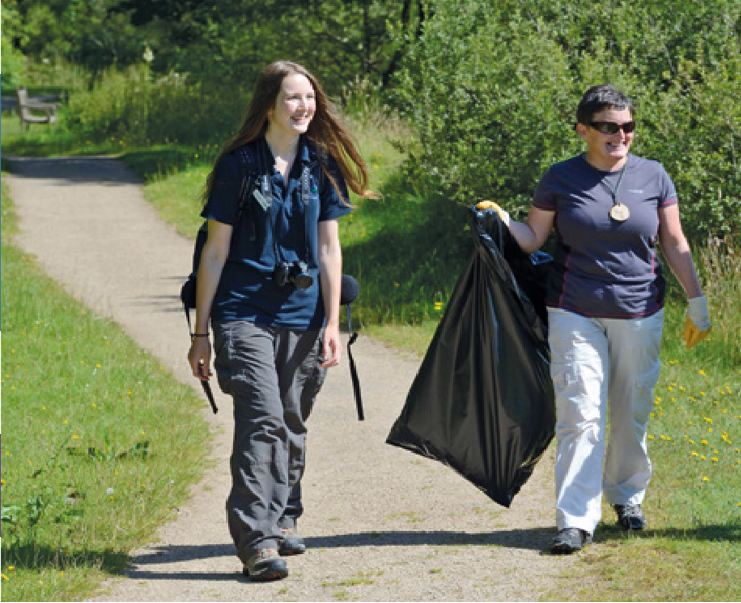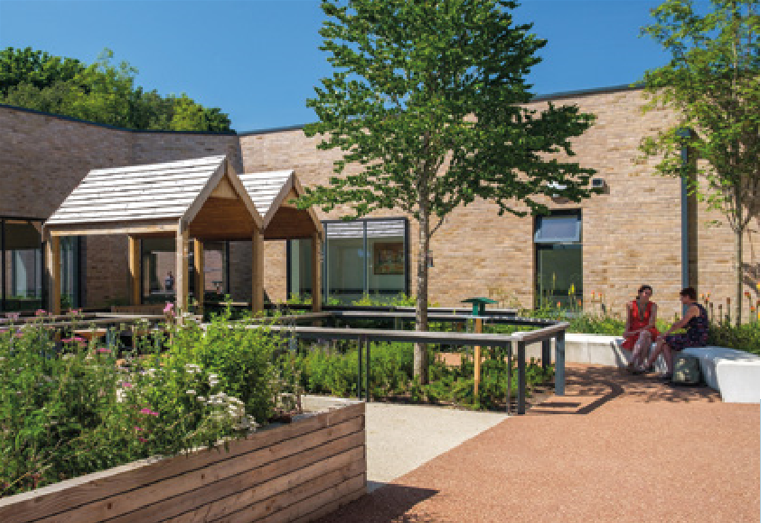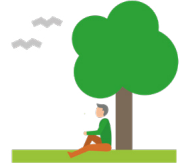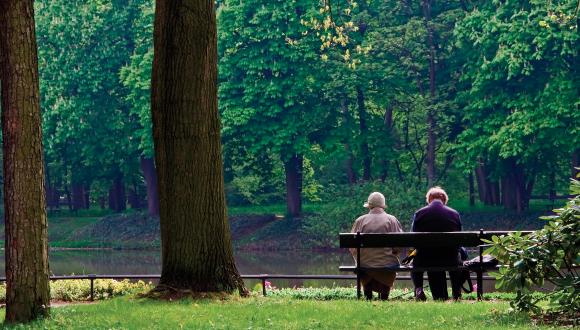Our Natural Health Service leaflet - April 2020
Improving public health and reducing health inequalities are key priorities in Scotland. A range of diseases and chronic conditions, often associated with lifestyles and life issues, coupled with an ageing population and more people experiencing multiple conditions, are putting increasing pressure on our health and social care systems.
Greater cross-sector collaboration to realise the potential of the natural environment can be part of the solution to these challenging issues. This leaflet describes the work being led by NatureScot to maximise the contribution of the outdoors to a healthier Scotland through Our Natural Health Service action programme.
Contributing to a healthier Scotland
Changes over recent generations in the causes and nature of illness, and modern day living, create complex challenges. It is increasingly recognised that addressing some of our key public health issues – physical inactivity, poor mental health and wellbeing, and health inequalities – is not wholly reliant on the health sector and requires solutions with contributions from across many different sectors.
The natural environment is a valuable health resource and one that can help deliver the new public health priorities. Our Natural Health Service is a cross-sectoral initiative that is showing how this resource can be integrated into public health, health and social care to contribute to prevention, treatment, recovery and care.
30 min brisk walk 5 days a week reduces the risk of:
- Heart attack and stroke 20-30%,
- Diabetes 30-40%,
- Hip fractures 36-68%,
- Bowel cancer 30%,
- Breast cancer 20%,
- Depression/ dementia 30%.
It’s in our nature
The positive links between environment and human health and wellbeing are now well-proven, supported by research from around the world and echoed in powerful individual life stories of how contact with nature can help people acquire and maintain healthy behaviours.
Ways to use the outdoors for health and wellbeing include
- outdoor recreation,
- volunteering,
- play and learning,
- gardening and
- active travel,
- as well as just relaxing and enjoying being out in green environments and nature.
Scotland has an extensive, diverse and accessible natural environment, which enables a range of healthy activity – see adjacent ONHS diagram. Good planning, provision and management of local parks, woods, green spaces and access networks is key to encouraging more everyday use for physical activity and contact with nature. The outdoors can be fun for all ages and abilities, provide a setting for social contact thus helping to reduce loneliness and isolation, and can help tackle health inequalities.
Making use of the outdoors purely for health objectives doesn’t motivate everyone and for many people, other factors encourage them to engage. Supportive programmes such as health walks groups, environmental volunteering or community growing schemes are valued by participants for the social benefits offered by group activities and as a stepping stone towards improvements in physical and mental health.
Health interventions based on the use of the outdoors can support people with a range of physical or mental health issues. From physical activity sessions for people with cancer or type 2 diabetes to wilderness therapy programmes for mental health or addiction service users, connecting to green space can provide fun, motivation, inspiration and the restorative value of being in and being active in nature.
Access to greenspace can help to protect the physical and mental health of people living in the most deprived areas of Scotland.
Our Natural Health Service
Realising the potential of Scotland’s outdoors to contribute to better health requires a more joined up approach. The Our Natural Health Service (ONHS) programme is being led by NatureScot (formerly known as Scottish Natural Heritage), working in partnership with Scottish Forestry, NHS Health Scotland (now part of Public Health Scotland) and a range of other national and local organisations across the environment, transport, sport, education and health sectors.
Central to the ONHS concept is making more use of Scotland’s natural environment through a range of green health activities to deliver both public health and health and social care outcomes – as illustrated in the diagram below
A diagram of the concept of Our Natural Health Service shows how green health activities that make use of our environmental assets can contribute to the collective responsibilities associated with public health, and health and social care.
ONHS partners are working together to increase awareness across sectors and among the public of how greater use of the outdoors can help sustain individuals’ health and happiness by providing connections to places, people and purpose. The programme is also encouraging the health and social care sector to integrate green health into their routine practice.
More than 9 in 10 visitors to Scotland’s outdoors report improvements to their physical and mental health as a result. Of those who visit the outdoors:
- 94% Say it helps them de-stress, relax and unwind,
- 92% Found it improved their physical health,
- 90% Report that it makes them feel energised and re-vitalised,
- 81% Say they enjoy getting closer to nature and
- 76% Value the social experience.
As an illustration of synergy with government policy, a number of ONHS related actions are included within Scotland’s Physical Activity Delivery Plan. The aims of the programme also support public health reform and other transformational initiatives within health service delivery such as Realistic Medicine, health and social care integration and social prescribing.
Delivery on the ground
To demonstrate how the ONHS approach can work in practice, four Green Health Partnerships (GHPs) have been established in Lanarkshire, Dundee, North Ayrshire and Highland.
GHPs are led locally by health boards and local authorities and, with a range of cross-sector partners, are shining a spotlight on nature as a local resource for health and wellbeing in response to local strategic plans and priorities. Collectively, the GHPs are beginning to show how a whole system approach can help deliver public health priorities around place, mental health and physical activity.

The four GHPs have dedicated project staff who are co-ordinating the following types of activity:
- Improving access to green health information – collating information about accessible green spaces and green health projects to be integrated into information sources used by the public and health practitioners
- Raising awareness of the value of green health within healthcare – communicating the benefits of green health to practitioners from the health, social care and voluntary sectors and ways to connect their service users to local opportunities
- Developing referral pathways to green health projects – establishing green prescription pathways or incorporating green health options into existing physical activity, mental health, social prescribing and lifestyle pathways and programmes
- Promoting the benefits of green health to the public – promoting green health activities such as active travel, volunteering, community gardening and informal recreation through social media, leaflets, short animated films shown in health and leisure settings and an annual Green Health Week
- Developing green health projects and opportunities – working with partners and green health activity providers to deliver new or expand existing projects for the general public or target locations / clinical groups
The ONHS programme has also helped establish four NHS Greenspace for Health Partnerships at New Craigs, Gartnavel, Ayr & Ailsa and Royal Edinburgh Hospitals. This follows the success of the NHS Greenspace Demonstration Project showing the benefits of investing positively in the outdoor estate as a health promoting asset. These four partnerships are facilitating greater use of hospital greenspace by patients, staff, visitors and the local community as well as testing models to engage wider groups in the management of the NHS estate. This approach is helping to achieve health and wellbeing benefits alongside other policy objectives around biodiversity, climate change, sustainability and corporate social responsibility.

Knowledge exchange
Experience gained through the ONHS programme will be shared widely to inform policy and practice in using the natural environment to achieve health outcomes. An ONHS logic model and evaluation framework have been developed to assess the effectiveness of GHPs in contributing to closer and improved working between the natural environment and health sectors. The first outputs of this evaluation will be available during 2020/21.
Scotland’s natural environment is important for people’s health and wellbeing. Nature is an underused health resource with significant potential to contribute to a modern sustainable health and social care system and a healthier Scotland.
More information on the ONHS programme and what it is achieving is available.

Sources of evidence:
- The health benefits of the great outdoors: A systematic review and meta-analysis of greenspace exposure and health outcomes, 2019 C Twohig-Bennet, A Jones – University of East Anglia
- Spending at least 120 minutes a week in nature is associated with good health and wellbeing, 2019 M P White et al – University of Exeter
- Health and the natural environment: a review of evidence, policy, practice and opportunities for the future, 2018 DEFRA and University of Exeter
“There is compelling evidence that green exercise improves not only our physical health, but also our emotional and mental health as well. I welcome the joined-up approach encompassed in the Our Natural Health Service initiative, the impact of which is entirely consistent with Realistic Medicine.”




